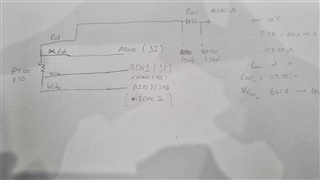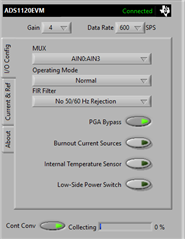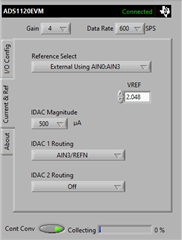Other Parts Discussed in Thread: ADCPRO, ADS1120
Hi,
I've been using the ADS1120EVM to try to connect to ADCPro via USB however I have not found much success/made sense of the data that has been acquired by the program.
Currently I do believe it could be configuration issues with ADCPro or it could be incorrect wiring. Is there an example of someone getting a 3/4 wire RTD up and running with the EVM and ADCPro?
I can provide wiring diagrams and such if needed.
Kind regards,
Tyson




